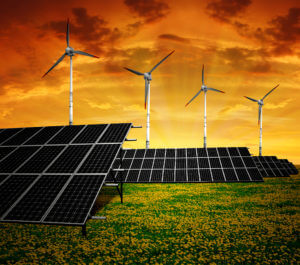Ricochet is the best place on the internet to discuss the issues of the day, either through commenting on posts or writing your own for our active and dynamic community in a fully moderated environment. In addition, the Ricochet Audio Network offers over 50 original podcasts with new episodes released every day.
 The Greens’ Dishonesty on Solar Energy
The Greens’ Dishonesty on Solar Energy
 Solar energy — mostly, though not exclusively, in the form of photovoltaic panels — has improved vastly in the last twenty years, and will likely become a significant energy source in the future as it becomes more efficient and less expensive. This is for good reason: the Earth receives orders of magnitude more energy in sunlight than we consume from all other sources; everyone has at least some access to sunlight; the technology scales easily; its process is simple, easy to maintain, and requires no fuel; and (as you might have heard) it emits no carbon while generating power. But like every energy resource, these advantages come with significant trade-offs. In this case, start with massive up-front costs, scarcity of some necessary materials, and enormous requirements of space.
Solar energy — mostly, though not exclusively, in the form of photovoltaic panels — has improved vastly in the last twenty years, and will likely become a significant energy source in the future as it becomes more efficient and less expensive. This is for good reason: the Earth receives orders of magnitude more energy in sunlight than we consume from all other sources; everyone has at least some access to sunlight; the technology scales easily; its process is simple, easy to maintain, and requires no fuel; and (as you might have heard) it emits no carbon while generating power. But like every energy resource, these advantages come with significant trade-offs. In this case, start with massive up-front costs, scarcity of some necessary materials, and enormous requirements of space.
But the biggest problem with solar power is that sunlight is intermittent and unreliable. In addition to the daily cycles of night and day, there are also seasonal cycles (especially at higher latitudes), as well as 11-year cycles within the Sun itself, all of which make it extremely difficult to design an electrical grid that relies heavily on solar generation. These predictable problems are further complicated by the chaotic ones posed by weather. In short, relying on solar energy is fine so long as you don’t mind having your source of light, heat, air-conditioning, and all our other modern life-enhancing, life-saving amenities be at the mercy of nature and the clock. There are two potential solutions: Either build a secondary power network as a back-up to the solar one (massively expensive and impractical), or find some way to store excess energy when it’s abundant so that it can be used when in demand. Unfortunately, there is no sensible, economical solution available right now, nor is any on the horizon. And any self-professed environmentalist who doesn’t acknowledge this is either ignorant or dishonest.
There’s no shortage of ways to store energy, though all of them are problematic and — currently — uneconomical. On a residential scale, batteries are expensive and wear out in a few years, hydrogen fuel cells are too inefficient and high-tech, fly-wheels and compressed air containers are dangerous. To make matters worse, none of these scale up well enough to level out solar’s shortcomings on either a regional or national scale. Gravitational energy storage — generally, in the form of pumping water into reservoirs when energy is available and releasing it through a turbine when in demand — does scale up and is in use already, but it’s too expensive, weak, slow, and geographically restricted to work for the purposes solar would require. A similar system involving trains mitigates that last problem, but we’re still talking about very small amounts of energy.
Solar will undoubtedly find a big place in our future, both as a portable energy source, and as a supplement to more reliable technologies. But unless our own anonymous can get the ear of The Powers That Be and his own space program (here’s hoping!), we’re going to need either fossil fuels or nuclear power to carry the base-load requirements of our civilization. Before leftist greens try to science-shame everyone who finds fault with their hysterias, they might try to familiarize themselves with the scientific and engineering challenges staring them straight in the face.
Published in Science & Technology



Yes. An earlier poster said she was saving lots, but was part of a grid, which provided backup electricity. Evidently, many solar users grid use is substantially subsidized…..by non solar customers.
I’ve also heard that major solar plants also require heavy base natural gas burning. About 10% of the energy they produce is from nat. gas.